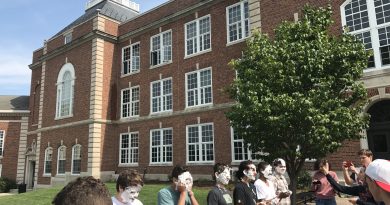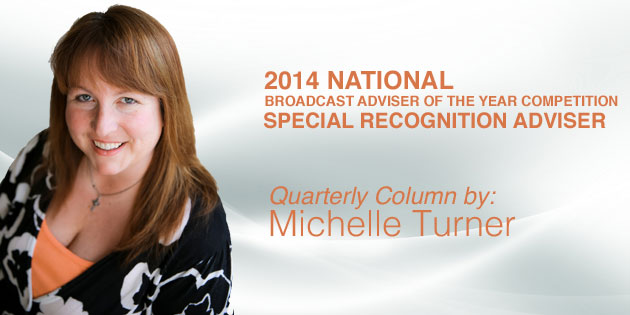Podcasting Basics for Beginners
The “War of the Worlds” hoax, Edward R. Murrow covering the bombing of London from rooftops during WWII and FDR’s fireside chats.
All of those were examples of famous (or infamous) radio broadcasts throughout the history of the medium. While it is easy to get caught up in the fact that video is becoming easier and easier for everyone to work with in this day and age it’s important not to forget the reasons why radio broadcasting or audio podcasting is still a great way to get information to listeners.
Many listeners are looking for ways to get information while doing simple activities (working out, folding laundry, raking leaves, etc.) Podcasts are a great way to continue building your credibility and increasing your publication’s brand’s reach to members of your school community while they are engaging in those activities.
It’s incredibly simple and cheap to begin an audio podcast. You can do it from any computer with relatively cheap equipment. The equipment, tips, and examples below are all based on a very simple formula for a podcast show. This should be a chance to have fun with multimedia journalism and get more stories out to your readers/listeners/viewers in a different way.
Recording and posting tools
-
USB mics that plug directly into any computer are as cheap as $30 on Amazon.
-
Audacity is a free, downloadable program that will allow you to edit your piece.
-
Garageband will also allow you to record and edit your podcast and comes pre-installed on all Mac computers.
-
Soundcloud is a free service that will allow you to upload your finished podcast and then embed it easily on your website.
Tips before you begin
-
Plan out the show!
-
Don’t try to wing it.
-
Things don’t need to be scripted word for word, but know what content the host is going to cover in each segment and the host should have questions prepared.
-
-
Let others in on the planning if they’ll be on the show.
-
The host should provide the co-hosts with the topics prior to recording so that everyone can be better prepared to make meaningful contributions to the conversation.
-
-
Don’t be afraid to bring in notes.
-
Do research in advance of the show.
-
This will make the show sound more professional and listeners will know that things were prepared before recording.
-
The structure of a journalistic podcast
-
Intro
-
Have everyone on the show say hi and introduce themselves so listeners know who they’re listening to. Tease each segment and what it’s going to be about.
-
-
A block (First topic)
-
Transition and/or corporate sponsorship (Cha-ching $$$)
-
B block (Second topic)
-
Transition and/or corporate sponsorship (Cha-ching $$$)
-
C block (Third topic- in many shows this segment is the same idea every show (e.g. “What’s making us happy” on NPR’s Pop Culture Happy Hour.)
-
Outro/credits
Intro music
-
Commission one of the school’s music directors to compose and record a song to act as the intro and outro for the podcast. (This adds an even deeper level of connection to the school that you’re trying to cover.)
OR
-
Find something royalty free that sounds good as the podcast intro and outro music. (For tips on where to find royalty free music check out JEADigitalMedia.org)
OR
-
Use Garageband to create an original synthetic track to act as theme music.
Other things to do
-
Invite guests to add a deeper and more credible level of conversation.
-
Coaches
-
Principals
-
Teachers
-
Student leaders
-
Community leaders
-
Famous alumni
-
-
Get permission for copyrighted music/clips. (With podcasts it could be possible that they’re fair use, but check this SPLC post to verify.)
-
Plan out who you need to mention in the credits, and actually read off the credits at the end of the show.
-
Even though the podcast will be posted to your site and the information may be typed there you want to make sure that you provide proper credits in the audio version as well.
-
Examples
Professional examples that follow this format:
-
NPR’s Pop Culture Happy Hour (transitions from segment to segment without ads.)
-
Slate’s Political Gabfest (corporate sponsorship is mentioned and integrated into each transition.)
Student examples of this format:
These are not rules that are set in stone. However, this is a good, formulaic format to follow for beginners. After a few shows have been completed it’s easier to branch out and experiment with different formats. Just like with writing it’s all about looking for examples of good podcasting in both the professional world as well as at podcasts that are being done by other student journalists.
Please add tips or link to examples that your school has done in the comments.





Pingback:Incorporating Podcasting into Curriculum – Un-Rapp-ing Journalism